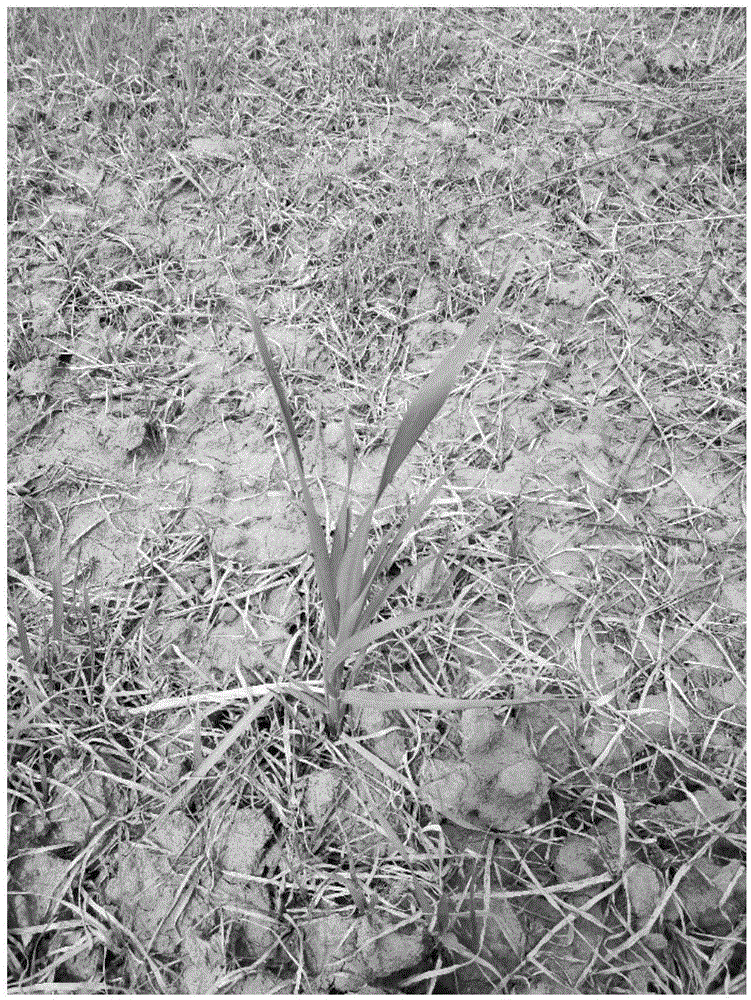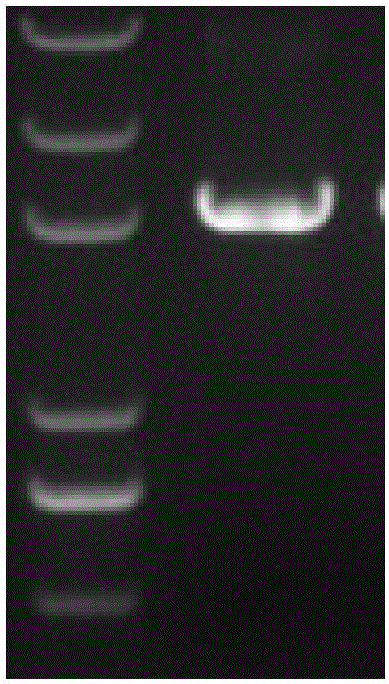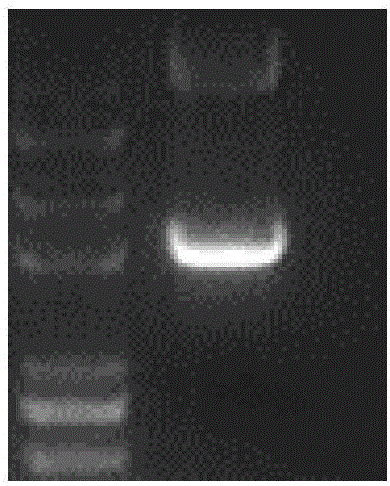Wheat ALS mutation gene and application of protein thereof in aspect of herbicide resistance
A mutant protein and mutant technology, which is applied in the field of plant protein and plant herbicide resistance, can solve the problems that the mechanism of herbicide action is not determined, and it is difficult to predict the herbicide resistance of ALS protein in advance, so as to achieve the effect of good growth state
- Summary
- Abstract
- Description
- Claims
- Application Information
AI Technical Summary
Problems solved by technology
Method used
Image
Examples
Embodiment 1
[0034] Example 1: The process of obtaining wheat mutants resistant to imidazolinone herbicides (Bailongtong)
[0035] Xumai seeds (purchased from Jiangsu Provincial Agricultural Germplasm Resources Protection and Utilization Platform) (this is M0, soaked for 2 hours with clear water) 120kg were divided into 6 times with 0.4-0.6% (w / w) ethyl methanesulfonate (EMS ) at room temperature for 6-9 hours, during which the seeds were shaken every 1 hour; the EMS solution was discarded, and the seeds were stirred and soaked in tap water 5 times, each time for 5 minutes, and then the seeds were rinsed with tap water overnight, and the field was sown the next day, and routine Fertilizer and water management (this is M1). After the plants are mature, the seeds are mixed, dried, and stored for the winter. Sow in the field the following year. When the wheat (this is M2) seedlings grow to the stage of 1 leaf and 1 core, spray 3mL of Bailongtong / L water ("Bailongtong" is a water-based imida...
Embodiment 2
[0036] Example 2: Analysis of mutation sites in herbicide-resistant wheat mutants
[0037] Among the herbicide-resistant wheat mutant plants obtained in Example 1 above, the leaves of the mutant plant No. 75 and the leaves of the wild-type plant were selected, and genomic DNA was extracted and sent to Shanghai Hanyu Biotechnology Co., Ltd. for genome sequencing. Sequencing results revealed that, compared with the wild-type plant, the above-mentioned herbicide-resistant wheat mutant No. 75 had a single-base mutation at nucleotide 331 of the ALS gene sequence on chromosome 6BL of its B genome, changing from G to A , causing the 111th amino acid of its corresponding encoded amino acid sequence to be changed from valine to isoleucine, that is, the nucleotide sequence of the 6BL chromosome ALS gene of the B genome of the No. 75 wheat herbicide-resistant mutant plant such as SEQ ID NO. 1, the amino acid sequence of the encoded ALS protein is shown in SEQ ID NO.2. The No. 75 wheat m...
Embodiment 3
[0038] Example 3 Cloning of ALS gene of wheat mutant resistant to imidazolinone herbicides
[0039] The leaves of the above-mentioned herbicide-resistant wheat mutant No. 75 were taken to extract genomic DNA. The specific primers for amplifying the full-length ALS gene were designed according to the sequencing sequence: forward primer 5'-CCATCACCCCTCCCCAATTCC-3', reverse primer 5'-CACTTGTAGGTCTTGTAGGTCG-3'. Using Takara PrimerSTAR Max DNA Polymerase polymerase (10U / μl) (purchased from Takara Company) to amplify the full-length sequence of the ALS gene, the reaction system is as follows:
[0040]
[0041] The PCR amplification reaction program adopts a two-step method, annealing and extension are combined together, and 68 ° C is used.
[0042] The procedure is as follows: pre-denaturation: 98°C for 3min; 35 cycles; denaturation at 98°C for 10sec; extension at 68°C for 3min; incubation: 72°C for 10min.
[0043] Take 2 μl of PCR products and detect by 1% agarose gel electrop...
PUM
| Property | Measurement | Unit |
|---|---|---|
| absorbance | aaaaa | aaaaa |
Abstract
Description
Claims
Application Information
 Login to View More
Login to View More - R&D
- Intellectual Property
- Life Sciences
- Materials
- Tech Scout
- Unparalleled Data Quality
- Higher Quality Content
- 60% Fewer Hallucinations
Browse by: Latest US Patents, China's latest patents, Technical Efficacy Thesaurus, Application Domain, Technology Topic, Popular Technical Reports.
© 2025 PatSnap. All rights reserved.Legal|Privacy policy|Modern Slavery Act Transparency Statement|Sitemap|About US| Contact US: help@patsnap.com



